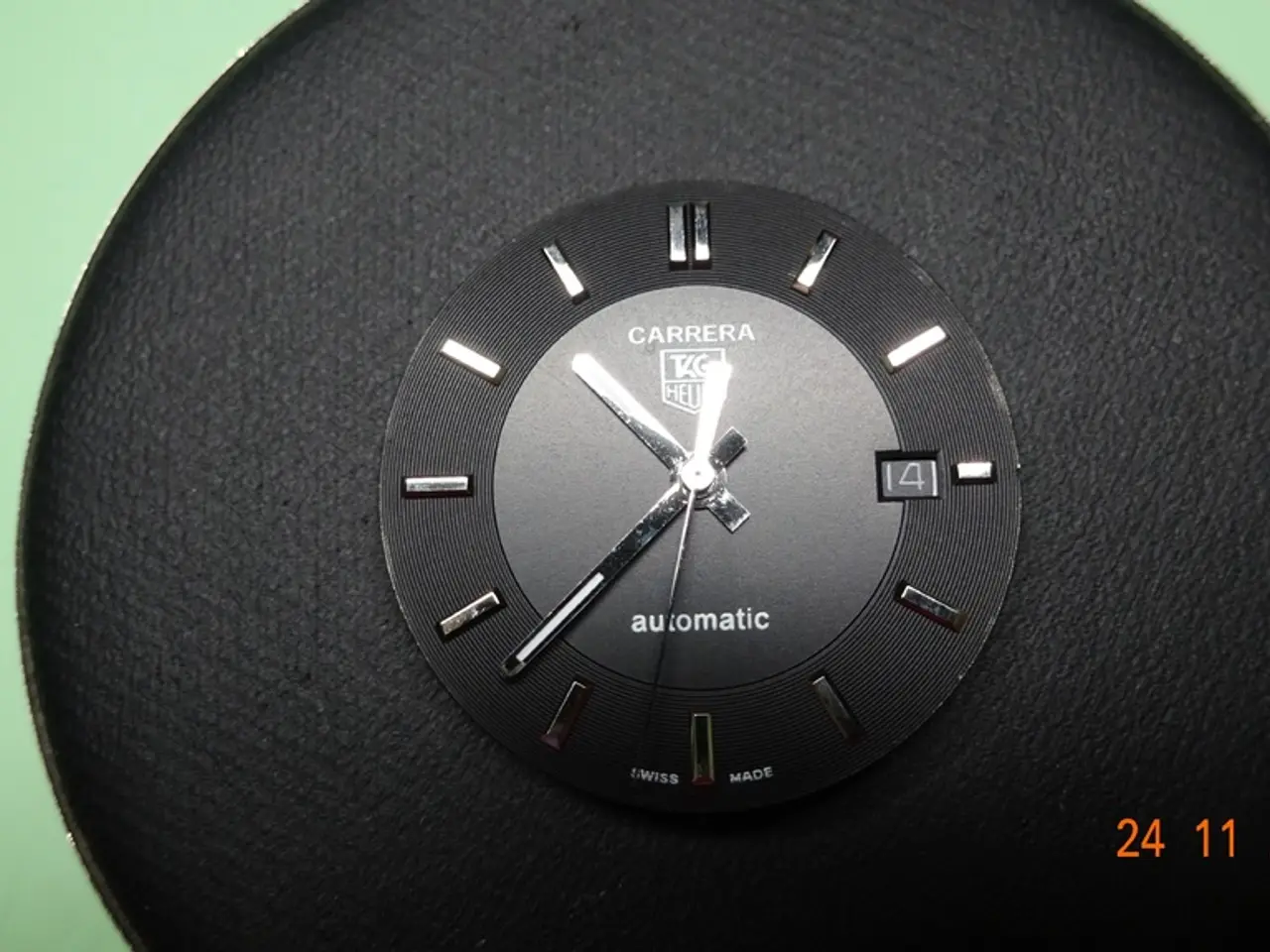Breakthrough in clock technology: World sets new precision standard
Atomic clocks, long the standard for accurate time measurement, have taken a significant leap forward with the advent of optical atomic clocks. These innovative devices, which use the transition of atoms between energy levels to emit or absorb light, offer unprecedented precision in time measurement.
Optical atomic clocks, a new generation of clocks, significantly surpass the capabilities of traditional atomic clocks. They use higher-frequency optical transitions, such as visible light, rather than microwave transitions like cesium clocks. This shift results in up to 100 times greater accuracy and improved stability.
The latest optical clocks, like the aluminum ion clock developed by NIST, have achieved accuracy to 19 decimal places with unparalleled stability. They surpass cesium clocks by 41% in accuracy and 2.6 times in stability, thanks to advanced quantum techniques and ultra-stable lasers paired with trapped ions. These advancements minimize environmental influences such as temperature and magnetic fields, enhancing the clocks' precision.
Applications in Space Exploration and Scientific Research
The extreme precision of optical atomic clocks opens up a wealth of possibilities, particularly in space exploration and scientific research.
Improved Global Positioning Systems (GPS)
Optical clocks offer a more accurate and stable time reference than microwave cesium clocks, enhancing satellite navigation precision crucial for spacecraft and planetary missions.
Geodesy and Earth Science
Their precision enables detailed measurements of Earth's gravitational field and geodesy, improving our understanding of tectonic activity and sea-level changes.
Fundamental Physics and Cosmology
These clocks can detect possible variations in fundamental constants of nature, providing tests beyond the Standard Model of particle physics.
Space-Time and Gravity Research
High-precision timekeeping in space missions helps test general relativity and space-time distortions more effectively than before.
Deep Space Navigation and Communication
Enhanced clock stability supports synchronization of deep-space probes and interplanetary communication networks.
Breakthroughs in Fundamental Physics and Navigation
The precision of optical atomic clocks allows for the exploration of the foundations of physics, particularly Einstein's general relativity, by detecting tiny effects of the curvature of space-time at microscopic scales. This potential for precision could transform navigation, communication, and fundamental physics research.
Recent advancements in optical atomic clocks involve the use of 40,000 strontium atoms cooled to a fraction of a degree above absolute zero. Researchers have achieved an unprecedented precision of 8.1 parts per tenth of a billionth of a billionth with these clocks.
The development of optical atomic clocks marks a significant advancement in the field of time measurement, surpassing the capabilities of traditional atomic clocks. This precision could potentially improve the accuracy of GPS systems by a factor of a thousand, transforming navigation and mapping.
Optical atomic clocks are expected to play a key role in space exploration due to their potential for precision never before achieved. The study detailing these advancements has been published in Physical Review Letters, offering a unique opportunity to test physical theories with unprecedented rigor.
Optical atomic clocks, with their extraordinary precision, are anticipated to revolutionize scientific research and space exploration. By surpassing the accuracy of traditional microwave atomic clocks, they can enhance satellite navigation, contribute to detailed Earth science measurements, and enable the exploration of fundamental physics beyond the Standard Model. Furthermore, their potential to test general relativity and space-time distortions more effectively, and transform deep space navigation and communication, makes them essential for future space missions.
Recent breakthroughs in optical atomic clocks, such as those using 40,000 strontium atoms cooled to near absolute zero, have led to unprecedented precision, reaching as low as 8.1 parts per tenth of a billionth of a billionth. This revolutionary technology, published in Physical Review Letters, presents an opportunity to test physical theories with unprecedented rigor, potentially improving the accuracy of GPS systems by a factor of a thousand, and paving the way for future advancements in navigation and mapping.




